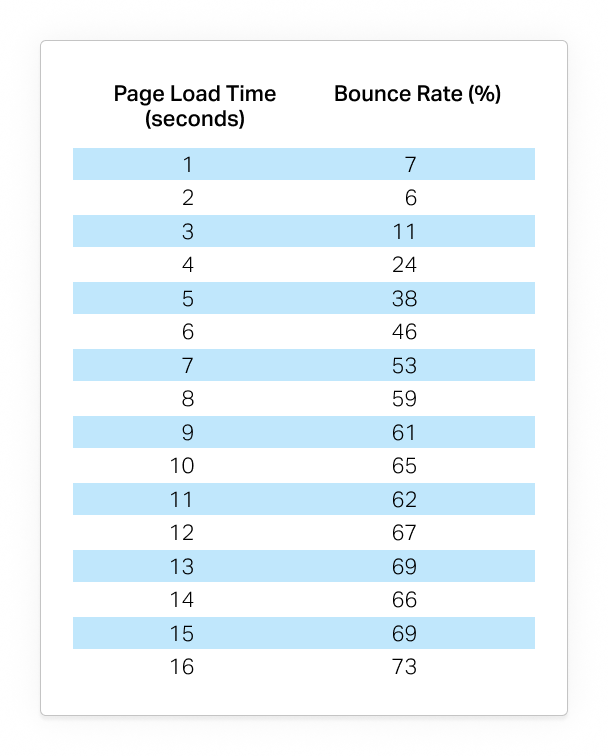
“Content is where I expect much of the real money will be made on the Internet, just as it was in broadcasting.”
Bill Gates, Content is King (essay)
SEO content marketing is the strategy of creating valuable, discoverable, and relevant content, in order to build a following based on trust. Content, in general, is any helpful information, typically in the form of articles, videos, podcasts, and graphics.
In a market saturated with advertisements and pitches, content exists to help prospects and customers solve problems and learn new things—no strings attached. That’s it. Content marketing is special.

Of course, the ultimate reason behind SEO content marketing, and the reason companies can afford to do it, is that eventually your audience has a likelihood of converting into customers.
The goal of a salesperson is to seem like a trusted advisor rather than a vendor, and content marketing builds trust between companies and prospective buyers, while also building brand awareness. Salespeople can’t do it all.
Bonus: Check out the video summary! ☝
Search engine optimization, or SEO, is the process of tailoring your website and content to get more organic traffic from search engines, like Google, Bing, or that cool tree-planting search engine Ecosia.
SEO is easier to accomplish on some web builders than others. For instance, if you use WordPress, the Yoast SEO plugin will advise you on SEO as you create posts, and will also insert special indicators (structured data) into your posts that satisfy search engine algorithms’ basic questions like “who wrote this post,” “is this a job posting,” etc.
Yoast will also advise you on how to improve your pages’ SEO as you compose them, such as increasing the number of times the keyword appears in the copy, or improving your headings.

Visual website creators, like Wix, allow users to do some basic SEO content tweaking in their own tool (Wix SEO Wiz) while creating a site or page. This still doesn’t compare to WordPress’s Yoast, because users will need to enter their own structured data manually, but it’s a start.
In visual creators, you’ll need to make sure the pages are created with proper titles, headings, paragraphs, and so on, since the site builder doesn’t automatically do any of this. It can’t, as its user interface is basically like Adobe Illustrator made easy.
There are over 200 factors that determine a site or page’s SEO ranking, varying from details on a specific web page, overall website authority, and more.
Fortunately (for me, having to write all this) there are 10 of these that are easy to optimize and will gain you the most “bang for your buck” in terms of visibility, and they’re also easy enough for any DIYer to tackle solo.

Headings are the titles, varying in size, at the beginning of pages, sections, and paragraphs. For SEO and content quality purposes, search engines “scan” a page’s headings to determine that:
If you’re writing a coffee-rubbed steak recipe, you’ll need to make sure you list ingredients under an “ingredients” heading, and so on. This will ensure that search engines understand what’s happening on the page, and may even score you a featured snippet.

Search engine algorithms read web pages like a third-grader who’s late for recess: keyword skimming. Your keywords should be a word or phrase that you think people might be typing into search engines, like “what is a sales funnel” or “cold email templates.”
Make sure your keyword is evenly distributed throughout your content, and is also found in the headings and subheadings—but not all of them. Too many keywords will make search engines think your page is spam.
If you’re specifically trying to rank for local traffic, your keywords will be more focused with keyword extenders like “near me” “close by” and “in city“, since people are telling Google they want a certain thing in a certain geographical location.
If you’re solely focused on “hacking” SEO content rather than readability, your strategy might simply be to plug your keyword as often as possible, along with variations and related phrases. That would be a mistake.
Instead, I personally prefer to account for readability and helpfulness and allow the organic shares and long pageviews to help boost my content’s ranking. These are both SEO indicators that search engines use to determine content quality as well.
I’d rather post something fun, informative, and helpful than post an SEO keyword grab to occupy the #1 spot on Google. There are a bunch of different strategies. Don’t be the bad guy.

This one’s sneaky. The topic of your content needs to be relevant to your readers, obviously. You knew that. But it also needs to be relevant to the content on your website and on your other blogs.
If one day your local movie theater started publishing software reviews instead of showtimes, their organic traffic would drop to zero. Search engines take topic into account for SEO because sites that give information on topic X aren’t necessarily experts on topics Y or Z.
Pro tip: Once you’ve got your topic picked out, type it into Google as a question. Try to incorporate some of the “People also ask…” points into your copy. This will make it rank better.

Look, there are no two ways about it, your content needs to be good—no matter what type of content it is. Content exists solely to help people, which in turn builds your following and fosters trust.
This means you should be publishing original, novel insights—things people haven’t heard before—on topics you’re passionate about. It’s not really possible (or advisable) to spoof your way onto the front page of search engines just by stuffing your page with SEO and keywords.
Write this down somewhere: If your content isn’t genuine and compelling, your audience won’t grow.
Alt tags (or “alt text”) are invisible bits of data associated with images that tell search engines what’s going on in the picture.
Image alt tags that match the topic and keywords let search engines know that even the photos on the page are relevant, thus boosting its SEO value.
Alt tags are also read aloud to visually impaired users via their web browsers, making them an important accessibility feature as well. Be sure to include alt tags on any photos you’re using in your SEO content.
External links are links from your content to other domains. When linking out, you get SEO points for linking to domains with content similar to the topic you’re writing about.
For instance, it’s totally cool for you to link to Nutshell when writing about awesome CRMs. Highly advised, in fact. ☝🤓
The actual text you choose to transform into a hyperlink is known as the anchor text. You get bonus points if the anchor text contextually matches the content on the page you’re linking to. You get fewer points if your anchor text is random.
Internal links work the same way external links work. Good anchor texts, relevant content, all that stuff makes your internal links more solid. The difference is that, with internal links, you’re linking to other pages on your own website rather than external pages.
This serves as a good method of giving your favorite web pages the highest link value and thus more visibility. If you have a good piece of SEO content that your users enjoy, link to it from your other posts!
Mobile traffic accounts for roughly 50% of all web traffic as of Q4 2019. To provide their users with the best possible experience, search engines are constantly testing pages’ mobile-friendliness and providing higher visibility to the pages that perform well.
Most web builders automatically publish mobile-friendly pages. Others just publish the page as-is, and it’s up to you to make your own pages mobile-friendly.
There’s no one-size-fits-all solution to mobile-friendliness, as the mobile issues that arise are based on the content you’re trying to publish. As a general rule, make sure all of your content elements will span a mobile page easily, without creating the need for horizontal scrolling or mini-text.
Some visual web editors get confused about margin spaces, so make sure nothing on your published mobile page is overlapping or in the wrong place. If your pictures are huge, make sure they’ll resize on mobile. It’s all about fitting everything properly in that tiny vertical screen.
Remember that you can always test your mobile usability yourself and update your published SEO content as needed.

Page loading speed is an important factor in ranking for SEO, but it’s also a usability issue. The higher a page’s loading speed, the higher the bounce rate. These numbers start to get scary, with almost 50% of users giving up after five seconds of page loading time.

There are a bunch of useful resources available to help content creators reduce their page loading times.
At a bare minimum, make sure to manually downscale your landing images before applying them to your content.
Also, large pieces of content like long videos or large photos should be linked to from another domain, rather than being hosted on your piece of SEO content. Trim that fat!
Arguably one of the most important factors in a page’s SEO ranking is its page authority, combined with the website’s domain authority. What is domain authority exactly? Good question:
Domain authority is a score that predicts how well a website will rank on search engines. The score is determined by a special SEO algorithm that primarily focuses on links—how many inbound/outbound links per site and the authorities behind them.
High-ranking sites that link to yours will increase your authority. Naturally, low-ranking sites that link to yours (known as toxic backlinks) will hurt your site’s reputation, resulting in less visibility for your pages and SEO content.
Domain authority is comparative rather than concrete. Since sites vary drastically in nature, and there’s only one scale to measure all the websites ever, it makes sense that similar sites’ scores will be within similar ranges.
For example, Wikipedia has 6 million English articles which all rank extremely high for their targeted keyphrase, and their domain authority is 93.
Don’t compete with them! Save yourself 6 million articles and focus on capturing your own SEO keyphrase that’s relevant to your topics and helpful for your audience.

Attend a live guided tour! Every Tuesday at 3pm ET / noon PT.

Remember, content marketing is about attracting an audience. Content is supposed to be helpful and compelling. Your content marketing strategy will fail miserably if your objective is to simply publish more arbitrary content, even if the SEO is adequate.
The price of SEO services from an SEO agency varies depending on the size of your business, the services you want, and the company you work with. But if you want to write SEO content yourself, make sure you’re really publishing something genuine and forget about putting your sales pitch in there.



Great SEO content alone won’t propel your site into stardom. If the SEO is well-structured, people will find it and engage with it, but there are still a bunch of things you can do to give your content more visibility.
Your network (see also: “fans” 😎) should be the first place you share your content. If you’re already doing a good job choosing topics, there should be numerous people within your network that will benefit from your content.
Rather than blasting your content to every single person in your phone book, send the right content to the right people. Matching topics with interests and understanding your target audience ensures your content actually gets read, and also proves you’re not a jerk.
If you have an email marketing strategy, adding your new content to your email distribution lists can be a great way to boost your content’s visibility. It’s also totally acceptable to share your SEO content on social media, since your social media following literally subscribed to you for your content.
It’s also highly recommended that you share your content with other marketers, or people in the same industry, and ask if they can link to it from somewhere on their site. This will increase your content’s page authority, and the inbound links will help your off-page SEO ranking.

Of course, asking for a link is almost always met with a request for a backlink in return. Before asking for a link, make sure you’re ready to add external links to their website if it comes up (it will.)


Join 30,000+ other sales and marketing professionals. Subscribe to our Sell to Win newsletter!